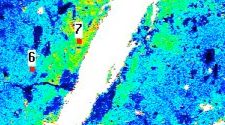
Quintessa participated in the EC NF-PRO project with financial support from the EC and Nirex. NF-PRO was concerned with the understanding and numerical modelling of key processes in the near-field of high-level waste (HLW) and spent fuel (SF) geological disposal facilities in crystalline, clay and salt geologies.
The main objective of NF-PRO was to establish the scientific and technical basis for evaluating near-field safety functions relating to radionuclide containment and minimisation of release. To this end, NF-PRO studied the dominant processes and couplings affecting the isolation of nuclear waste within the near field, and developed conceptual and mathematical models for predicting the source-term release of radionuclides.
The evolution of bentonite buffers in contact with cement was examined by simulating a laboratory experiment investigating the effects of cementitious water diffusing through bentonite with a coupled reactive-transport geochemical modelling code. The chemical processes included in the model included ion-exchange reactions within the montmorillonites and kinetic dissolution/precipitation of primary and secondary minerals. Blind predictions were made of the extent and chemical composition of the alteration zone, which were broadly in line with the experimental results.
The presence of both iron canisters and bentonitic clay in some proposed geological disposal facility designs creates the potential for chemical interactions which may impact upon the long-term performance of the clay as a barrier to radionuclide migration. The state of knowledge of iron-bentonite interactions was reviewed, which highlighted the importance of the processes of nucleation, growth, precursor cannibalisation, and Ostwald ripening by analogy with natural systems. These processes were incorporated into a QPAC geochemical transport model to address the issues of the slow growth of bentonite alteration products.
Image courtesy of Christina Lilja, SKB and Nick Smart, AMEC.